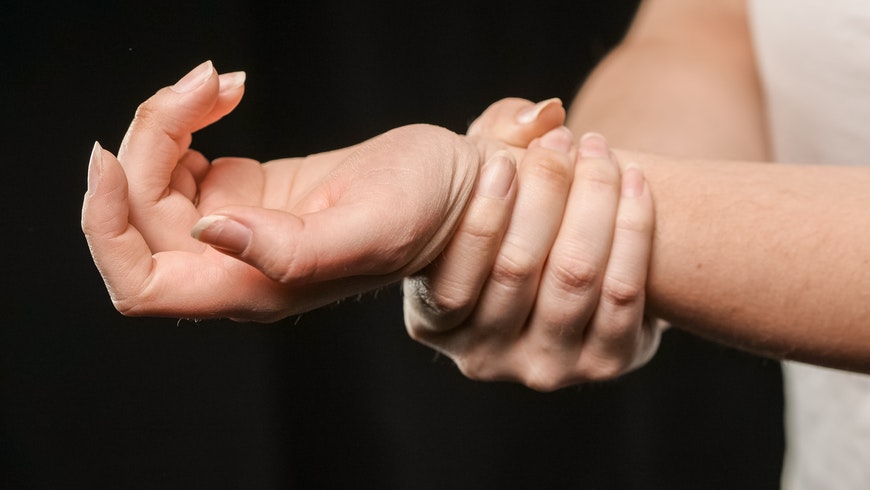
Overview
Gout is a form of arthritis. It is common, but very complex and it can affect anyone. It’s characterized by sudden and severe attacks of swelling, tenderness, pain, and redness in the joints. Most often it affects the joint at the base of the big toe. You can get medication for gout to help alleviate the condition.
Gout attacks can occur suddenly. Often you will wake up in the middle of the night feeling that your big toe is on fire. The affected joint is swollen, hot, and very tender.
Gout symptoms may come and go, but there are ways to manage symptoms and prevent flares.
Symptoms
The symptoms of gout usually occur suddenly and at night.
They include:
- Intense joint pain. Gout generally affects the large joint of your big toe. It can, however, occur in any joint. Other joints commonly affected by gout include the knees, ankles, fingers, wrists, and elbows. The pain will likely be most severe the first 4-12 hours after it starts.
- Lingering discomfort. After the initial severe pain goes down, some joint discomfort can last from a few days to weeks. Subsequent attacks will likely last longer and affect more joints.
- Redness and inflammation. The joint or joints affected get tender, red, swollen, and warm.
- Limited range of motion. As gout continues to progress, you may not be able to normally move your joints.
Causes
When urate crystals accumulate in your joint, they cause the inflammation and intense pain of a gout attack. Urate crystals can form when there are high levels of uric acid in your blood.
Uric acid is produced when your body breaks down purines – substances naturally found in the body.
Purines are found in some foods like: organ meats, steak, and seafood. Other foods promote a higher level of uric acid such as drinks sweetened with fructose and alcoholic beverages (especially beer).
Uric acid normally dissolves in your blood and passes through your kidneys into the urine. Sometimes, your body may produce too much uric acid or your kidneys will excrete too little uric acid. This causes uric acid to build up, forming sharp urate crystals in a joint or surrounding tissue. These crystals cause inflammation, swelling, and pain.
Diagnosis
Tests for diagnosing gout may include:
- Blood test. Your doctor may request a blood test to measure levels of creatinine and uric acid in the blood. Blood test results may be misleading though, as some people may have high uric acid levels but never experience gout. Others may have normal uric acid levels but still have symptoms of gout.
- Ultrasound. Musculoskeletal ultrasound can detect urate crystals. This technique is used more widely in Europe than North America.
- Joint fluid test. Your doctor will use a needle to draw fluid from the affected joint. If urate crystals are there they will be visible when the fluid is examined under the microscope.
- Dual energy CT scan. This kind of imaging can detect urate crystals in a joint even when it’s not inflamed. This test is expensive and inaccessible so it is not used routinely in clinical practice.
- X-ray imaging. Joint X-rays can be helpful to rule out other causes of joint inflammation.
Treatment
Medication for gout is usually involved in treatment. The specific medication for gout you and your doctor choose will be based on your own preferences and your current health.
Medication for gout can be used to prevent future attacks as well as to treat acute attacks. Medication for gout can also reduce your risk of complications, such as the development of tophi.
Medications to treat gout attacks
Drugs used to treat acute attacks and prevent future attacks include:
- Colchicine. Your doctor may recommend Colchicine as a medication for gout. It is a pain reliever that effectively reduces gout pain. This medication’s efficacy could be offset, however, by side effects such as diarrhea, nausea, and vomiting. A low daily dose of colchicine may be prescribed after the resolution of an acute gout attack to prevent future attacks.
- Corticosteroids. Corticosteroids, such as prednisone, can control gout pain and inflammation. Corticosteroids can either be injected or taken orally. Corticosteroids are usually used as medication for gout for those who cannot take Colchicine or NSAIDs.
- Nonsteroidal anti-inflammatory drugs (NSAIDs). NSAIDs include over-the-counter options like ibuprofen (Advil) and naproxen (Aleve). There are also prescription NSAIDs like celecoxib (Celebrex), or indomethacin (Indocin). You will initially be prescribed a higher dose to stop an attack, followed by a lower daily dose to help stop future attacks.
Medications to prevent gout complications
If you experience multiple attacks of gout each year, or if your gout attacks are particularly painful, your doctor may recommend a medication for gout to reduce your risk of complications. If you have evidence of damage from gout on joint X-rays, or if you have kidney stones, tophi, or chronic kidney disease, medications for gout that lower your body’s levels of uric acid might be recommended.
Options include:
- Medication that improves uric acid removal. These medications for gout, called uricosurics, include lesinurad (Zurampic), and probenecid (Probalan). Uricosuric drugs increase your kidney’s ability to take uric acid out of your body This can lower your uric acid levels and reduce the risk of a gout attack, but the level of uric acid in your urine will increase.
- Medications that block uric acid production. Drugs called xanthine oxidase inhibitors (XOIs), limit the amount of uric acid produced by the body. These medications for gout include allopurinol (Lopurin, Zyloprim, Aloprim) and febuxostat (Uloric). This may lower your blood’s level of uric acid and reduce your risk of gout.


